As arms control talks between Washington and Moscow are set to begin in Cairo in late November, let's take a look at the history of arms control agreements between the two nuclear powers.
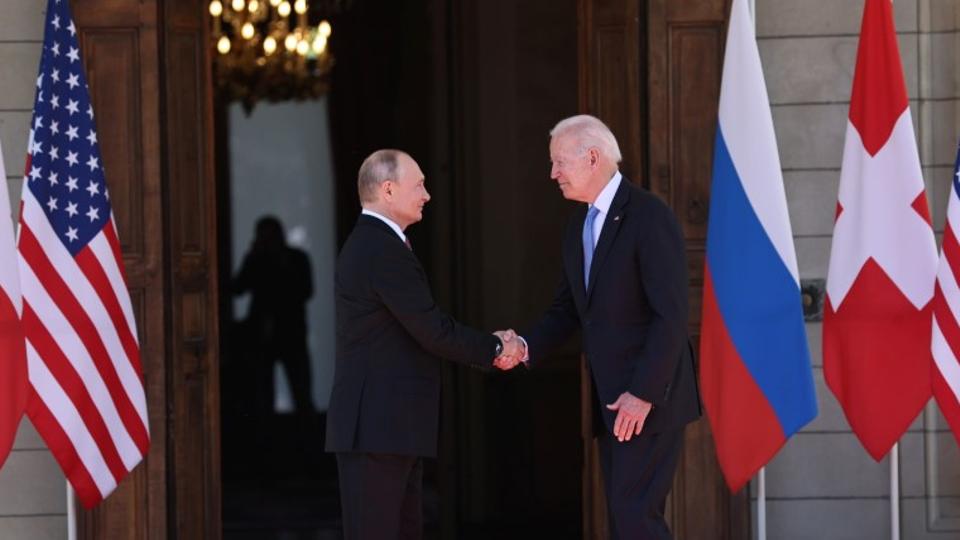
These meetings come at a time of the reemergence of tensions between Moscow and Washington.
The nuclear arms race was perhaps the most alarming feature of the Cold War competition between the United States and Soviet Union.
Over the decades, the two sides signed various arms control agreements as a means to manage their rivalry and limit the risk of nuclear war.
However, deep fissures have reemerged in the US-Russia relationship in recent years, raising once again the possibility of a nuclear arms race.
Let's take a look at the timeline of the arms race between the nuclear powers.
1945: US starts the Nuclear Weapons Age
In early August of 1945, American warplanes dropped atomic bombs on Hiroshima and Nagasaki, killing more than one hundred thousand Japanese people.
Many more would later die from related injuries or illnesses.
The devastation helped compel Japan’s surrender in World War II and demonstrated the effectiveness of weapons of mass destruction.
1949: First Soviet Nuclear Test
As the rivalry between the USSR and US was taking off, Moscow countered Washington by producing a nuclear weapon of its own and testing it in Kazakhstan.
1952 -1955: Bombs grow deadlier
As their geopolitical rivalry was heating up, the United States and Soviet Union raced to develop the next class of weapons, known as thermonuclear, or hydrogen, bombs.
In late 1952, US scientists detonated the first of these weapons in the Marshall Islands, an explosion hundreds of times more powerful than the bomb dropped on Hiroshima.
During another US test in 1954, known as Castle Bravo, scientists badly miscalculated the yield, which created a radioactive fallout that harmed many Marshall Islands inhabitants.
The Soviet Union tested its first thermonuclear device in November 1955.
Soviet testing also produced devastating health effects on nearby residents in Kazakhstan.
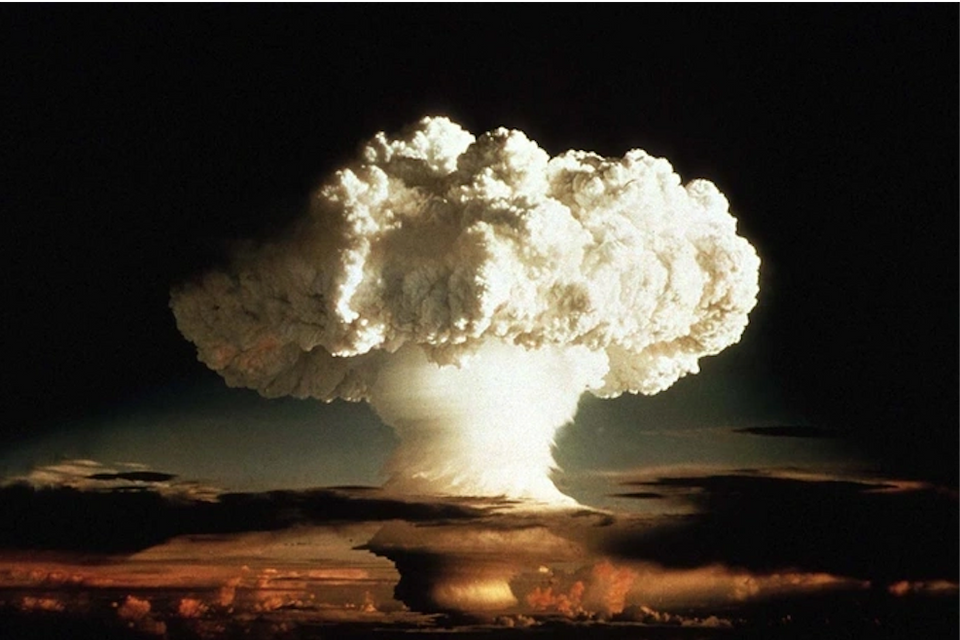
1957: IAEA Established
In 1957, The International Atomic Energy Agency (IAEA) was established in Vienna as a forum for international cooperation on civilian nuclear research.
Unanimously approved by more than eighty countries, the IAEA’s charter outlined a three-part mission: nuclear verification and security, safety, and technology transfer.
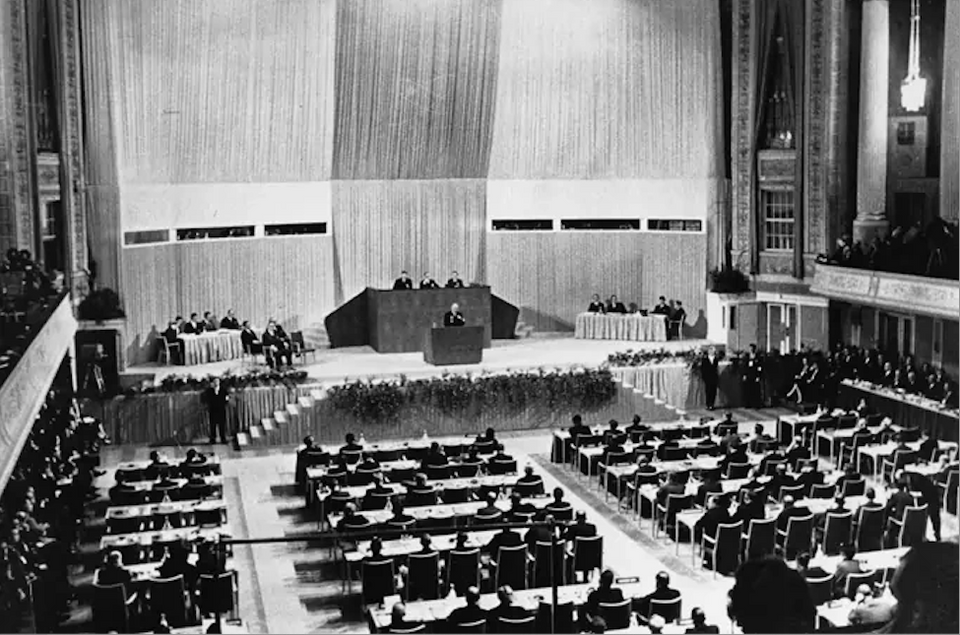
1962: Cuban Missile Crisis
Cold War tensions nearly spilled over into a nuclear conflict when, in October of 1962, US reconnaissance flights revealed the Soviets constructing secret missile bases in Cuba.
After a thirteen-day
standoff between the superpowers, which included a US naval blockade of
Cuba, the Soviet Union agreed to withdraw its missiles.
In exchange, the United States publicly pledged not to invade Cuba and, confidentially, agreed to pull its nuclear missiles out of Türkiye.
1963: Limited Test Ban Treaty
After years of on-again, off-again negotiations, the Soviet Union and the United States agreed to ban nuclear explosions in the atmosphere, outer space, and under water, and to significantly restrict underground testing.
The Limited Test Ban Treaty reflected growing international concerns about the dangers of a nuclear fallout.
A high-speed “hotline” which connected the leaders of the Soviet and US governments was established to mitigate the risk of accidental warfare.
1968: Treaty on the Nonproliferation of Nuclear Weapons (NPT)
After multiple drafts, the Soviet Union and the United States signed the Treaty on the Nonproliferation of Nuclear Weapons (NPT) on July 1, 1968, agreeing to pursue general disarmament.
1969-1980: Détente
The late 1960s and early 1970s saw a general thawing of US-Soviet relations and ushered in a hopeful era of nuclear arms control, which became most apparent in the Strategic Arms Limitation Talks, or SALT.
The two sides forged a pair of groundbreaking agreements in 1972: the Anti-Ballistic Missile (ABM) Treaty limited the countries’ deployment of missile defense systems to their national capital and one ICBM site, and SALT I, which restricted their number of nuclear missile silos and submarine-launched missile tubes for a five-year period.
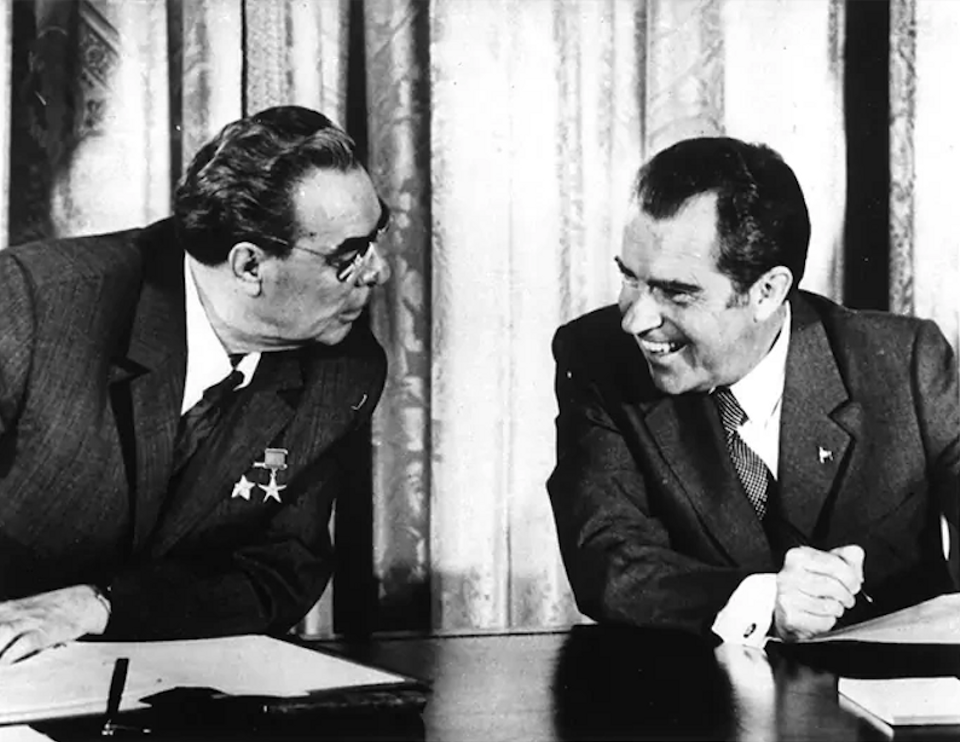
On June 21, 1973, US President Richard Nixon (left) and Soviet leader Leonid Brezhnev (right) pledge to permanently limit their countries’ offensive nuclear arsenals. (AP Archive)
In June 1979, the United States and Soviet Union signed a SALT II agreement that would have placed further limits on their nuclear weapons and launch platforms, including strategic bombers, and imposed certain notification requirements and new testing bans.
However, in December, the Soviet Union invaded Afghanistan, starting a nine-year war in which its forces and allied Afghan communists battled the mujahidin.
The US responded to the Soviet invasion by freezing the consideration of the SALT II treaty.
1981-1983: ‘Zero Option' and START
In
its first year, the Ronald Reagan administration focused on modernising
the US strategic nuclear arsenal and accelerated a general military
buildup.
However, in November, President Reagan presented the Soviet Union with a so-called zero option, in which all Soviet and US intermediate-range nuclear missiles would be removed from installations around the world.
The following June, Reagan proposed a Strategic Arms Reduction Treaty, or START, which seeked deep cuts in warhead counts and delivery vehicles.
Soviet concerns where heightened as the North Atlantic Treaty Organization (NATO) began to deploy upgraded Pershing missiles in Western Europe, capable of striking targets in Russia.
The Pershing II rollout triggered massive antinuclear protests in European NATO states.
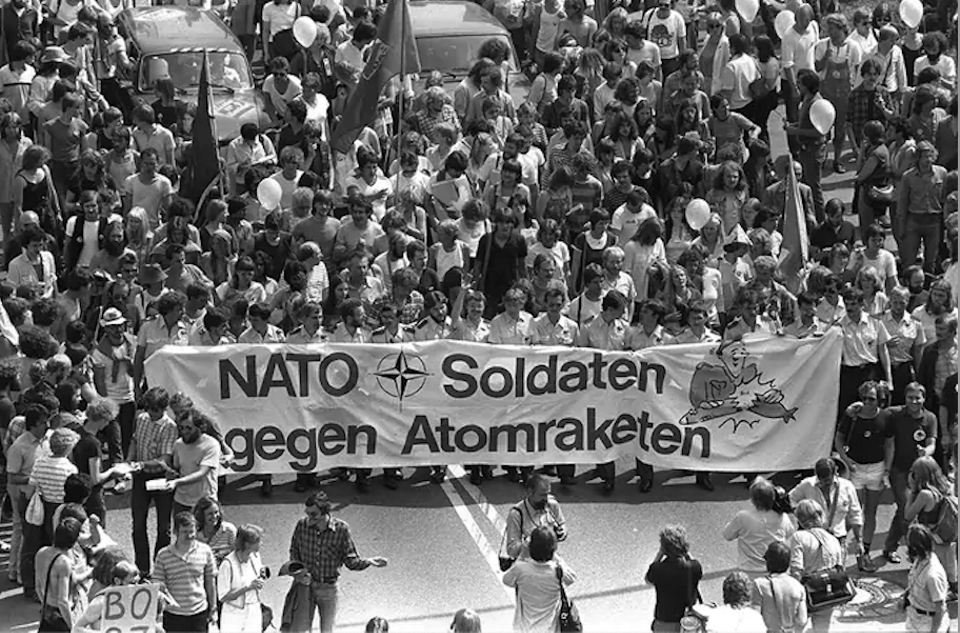
West German soldiers and civilians march with a banner reading "NATO soldiers against nuclear missiles" in a demonstration attended by about 150,000 people in Bonn, June 10, 1982 (AP Archive)
1986-1987: Intermediate-Range Nuclear Forces Treaty
Soviet leader Mikhail Gorbachev and his US counterpart Ronald Reagan nearly agreed to abolish their offensive nuclear weapons within ten years.
Despite their failure to reach a final agreement, the measures discussed paved the way for subsequent nuclear diplomacy.
In 1987, Gorbachev and Reagan signed the Intermediate-Range Nuclear Forces (INF) Treaty, agreeing to eliminate by 1991 their countries’ arsenals of ground-launched, midrange nuclear missiles.This was first agreement to reduce nuclear arms—as opposed to setting ceilings—and it introduced comprehensive verification measures.
1989-1992: End of Cold War, START Signed and Ex-Soviet Republic disarm
US-Soviet disarmament talks accelerated after the fall of the Berlin Wall on November 9, 1989, which marked the beginning of the end of the Cold War.
In July 1991, with the collapse of the Soviet Union just months away, US President George H. W. Bush and Gorbachev signed the START treaty.
The agreement was a success as both sides, which each had more than ten thousand deployed warheads in 1990, pledge to reduce their arsenals to well below six thousand by 2009.
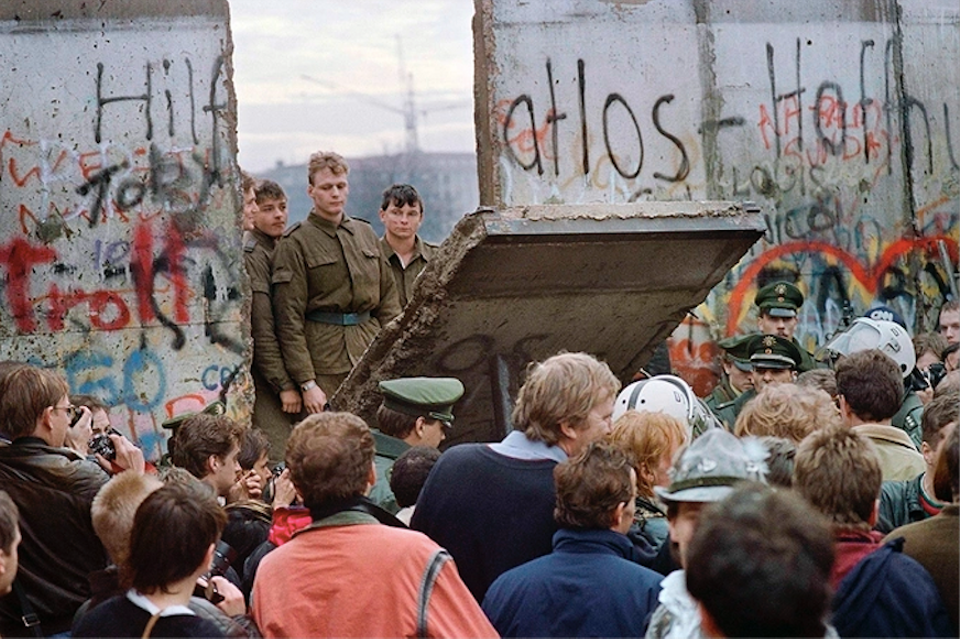
West Berliners crowd in front of the Berlin Wall in November 1989 as they watch East German guards demolish a section of the barrier to open a crossing point between East and West Berlin. (AFP Archive)
In March, the United States, post-Soviet Russia, and twenty-five other countries signed the Treaty on Open Skies, which allowed members to conduct scheduled reconnaissance flights over another’s territory.
Belarus, Kazakhstan, and Ukraine signed the Lisbon Protocol to the START agreement in May, which committing the newly independent states to transfer the former Soviet nuclear arsenals to Russia.
2002: SORT and Missile Defense
In May, President Bush and Russian President Vladimir Putin signed the Strategic Offensive Reductions Treaty (SORT), also known as the Moscow Treaty, agreeing to significantly cut the number of deployed strategic nuclear warheads within ten years.
Critics say the treaty, which effectively supersedes START II, was too vague and lacked adequate compliance measures. SORT took effect the following year after congressional approval.
In June, President Bush withdrew the United States from the ABM, claiming it limited United States’ ability to develop missile defenses against terrorists and so-called rogue states, such as Iran and North Korea.
The move angered Russia, which viewed US foreign policy in the aftermath of 9/11 with increasing concern.
2009-2010: The Obama reset and New Start
President Barack Obama looked to set a new tone for US engagement with the world, saying the United States has a “moral responsibility” to lead the world in nuclear disarmament.
Obama and pledged to negotiate new strategic weapons reductions with Moscow.
In April of 2010, Obama and Russian President Dmitry Medvedev signed a new strategic arms reduction agreement, replacing the first START treaty, which expired in 2009.
The so-called New START treaty committed Washington and Moscow to another round of cuts to their strategic offensive arsenals.
2014: New era of geopolitical rivalry
Russian security forces occupied and subsequently annexed Crimea, which belongs to Ukraine.
This event and the western response spurred an end to the US-Russia reset and heralded a renewed era of geopolitical rivalry.
2018-2019: US Withdraws From INF Treaty
In August, the Donald Trump administration announced it will pull the United States from the Cold War–era pact that bans midrange, ground-launched nuclear missiles.
For years, the United States had claimed that Russia tested and deployed a cruise missile prohibited by the treaty, an allegation Moscow denied.
The US withdrawal, which took effect in August 2019, was supported by NATO allies and came amid a series of disputes with Russia over Ukraine, Syria, and interference in US elections.2020: Open skies under threat
In November, the United States withdrew from the Treaty on Open Skies.
As its rationale, the Trump administration alleged that Russia had been abusing the agreement for years.
Many NATO members expressed regret at the US withdrawal from Open Skies.
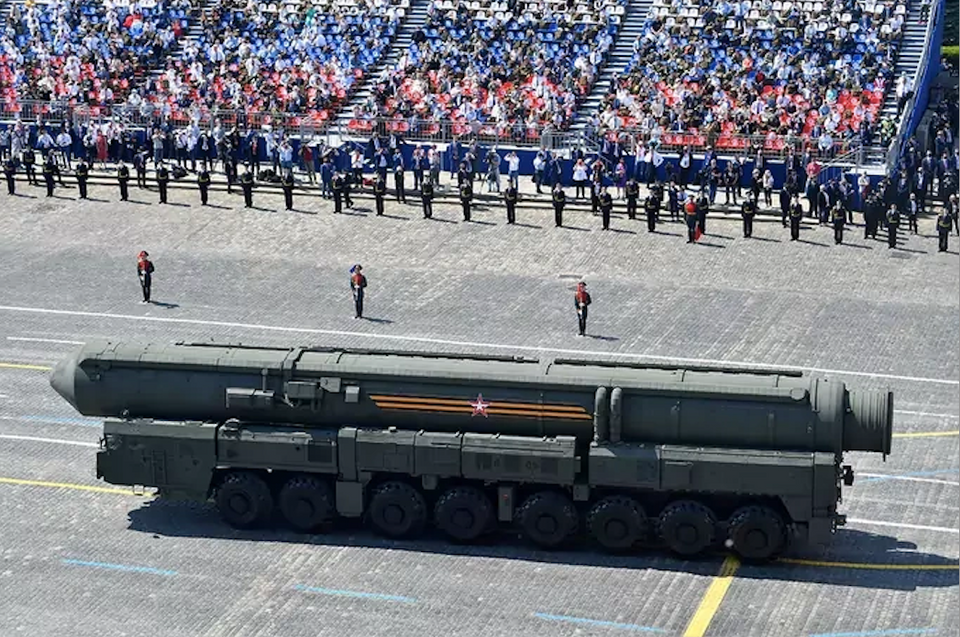
2021: New START extended
Days before the 2011 treaty was set to expire, the United States and Russia agreed to extend New START for another five years, keeping verifiable limits on their arsenals of long-range nuclear weapons.
The agreement was one of Joe Biden’s first major foreign policy acts as US president.
2022: Ukraine Conflict
In February, Moscow started its offensive in Ukraine, which raised the tensions between Russia and the West back to Cold War levels.
In August, Russia told the United States it would not allow its weapons to be inspected under the New START nuclear arms control treaty citing various reasons.
In November, US and Russian intelligence officials met in Türkiye, in order to mitigate the risk of a nuclear conflict.
“The issues discussed there are sensitive in nature,” said Russian Deputy Foreign Minister Sergey Ryabkov, referring to the meeting of CIA Director Bill Burns and Russian Foreign Intelligence Service chief Sergey Naryshkin in the Turkish capital Ankara.
Ahead of the meeting in Cairo, Ryabkov said Russia wants to maintain its ties with the US, but underlined that the future of their relations depended on Washington.
Social media is bold.
Social media is young.
Social media raises questions.
Social media is not satisfied with an answer.
Social media looks at the big picture.
Social media is interested in every detail.
social media is curious.
Social media is free.
Social media is irreplaceable.
But never irrelevant.
Social media is you.
(With input from news agency language)
If you like this story, share it with a friend!














0 Comments